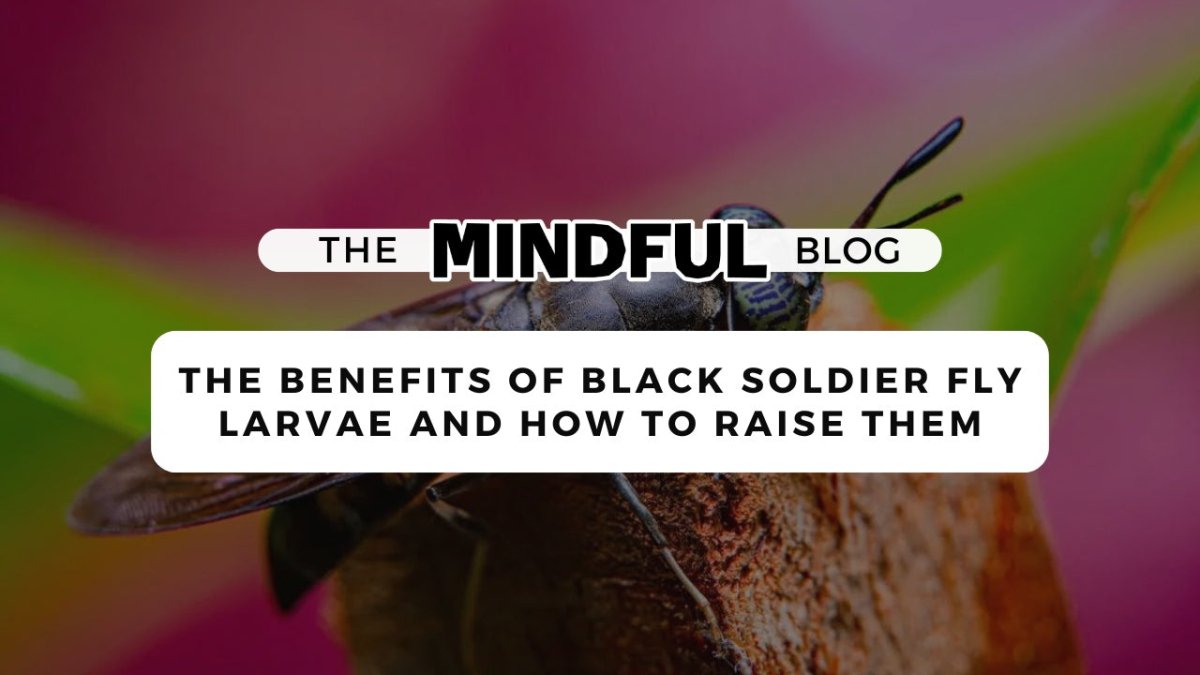
Raising black soldier flies (BSF) might not sound glamorous, but these little insects are nature’s ultimate composters and can make a world of difference for your garden or homestead. Whether you’re looking to reduce waste, create nutrient-rich compost, or even cut down on animal feed costs, BSFs are a powerhouse addition to any sustainable setup.
Why Black Soldier Flies?
Black soldier flies are unmatched when it comes to waste reduction. Unlike traditional composting methods, they can process nearly any type of food scrap—even meat and dairy. Their larvae can reduce food waste volume by up to 80%, leaving behind nutrient-rich residue for your garden beds.
BSF larvae are also a protein-packed feed source, perfect for chickens, ducks, and fish. Raising them in bulk significantly reduces animal feed costs while providing excellent nutrition.
The Environmental Benefits
Incorporating black soldier fly larvae into your system isn’t just practical—it’s eco-friendly. These natural recyclers consume their body weight in organic waste daily, drastically reducing food scraps sent to landfills.
Their byproduct is a rich natural fertilizer that improves soil health, structure, and plant yields. Additionally, using BSF larvae as a sustainable feed source lowers reliance on industrially processed animal feed, reducing your carbon footprint.
Scalable and efficient, BSFs can fit into a large farm or a small city garden. They contribute to biodiversity while helping you create a closed-loop system that minimizes waste and nourishes your soil.
Understanding Black Soldier Fly Larvae
Black soldier fly larvae (BSFL) thrive on decomposing organic matter, rapidly transforming waste into nutrient-rich fertilizer. Their lifecycle has four stages: egg, larva, pupa, and adult.
- Eggs: Laid near rotting organic matter, hatch in days.
- Larvae: Consume food scraps and grow rapidly.
- Pupa: Transition to adult stage in a few weeks.
BSFL are incredibly efficient at converting waste into protein, making them ideal for animal feed or compost systems. Plus, raising them is a hands-on, engaging project that’s great for families.
How to Get Started
Ready-Made Systems
For beginners, ready-made systems to simplify BSF farming. These setups are efficient and user-friendly.
DIY Options
Prefer to build your own system? A plastic bin with proper drainage and ventilation works wonders. Line the bottom with food scraps, introduce larvae, and maintain a moist (but not soggy) environment at 75–80°F. Monitor regularly to prevent mold and odors while fine-tuning the system.
Here's an instruction manual offers a simple, step-by-step guide to help you create your own BSF farm with ease.
Feeding and Caring for Your Larvae
Black soldier fly larvae thrive on a balanced mix of organic waste, including fruits, vegetables, and grains. A diverse diet ensures rapid growth and high protein content for animal feed.
- Moisture: Keep the environment damp but not waterlogged.
- Hygiene: Remove uneaten food to avoid mold and unpleasant odors.
Healthy larvae are active and grow quickly, making regular observation key to maintaining a thriving colony.
Harvesting and Using BSFL
When larvae reach full size (about the size of a pinky nail), they’re ready for harvest. Collect them using a sieve or by scooping the top layer of the bin.
- Animal Feed: Use larvae as a protein-packed feed for chickens, fish, or pigs.
- Compost: Incorporate larvae into compost to boost soil nutrient levels.
- Sustainability: Let some larvae mature into pupae to sustain your colony.
The Economics of BSF Farming
BSF farming is cost-effective and beginner-friendly. While ready-made systems are available, DIY options save money and achieve the same results. Once established, BSFs manage themselves, reproducing rapidly and providing a steady supply of larvae and fertilizer at no additional cost.
Common Challenges and Solutions
Raising BSFL comes with challenges, but they’re manageable with proper care:
- Odors: Avoid soggy waste, ensure ventilation, and remove uneaten food.
- Pests: Manage the bin well to deter unwanted insects.
- Overcrowding: Monitor and harvest larvae regularly or split them into additional bins.
- Temperature: Maintain a warm, slightly humid environment (shade in summer, insulation in winter).
Real-Life Success Stories
From reducing food waste to enriching compost, BSF farming has transformed many gardens and homesteads.
- A small farmer reduced food waste by 80% and created protein-rich chicken feed, improving her flock’s health.
- A gardener sped up composting with BSFL, leading to healthier soil and bigger vegetable harvests.
These success stories highlight the powerful role BSFs can play in creating a sustainable ecosystem.
Embracing the Benefits of Black Soldier Fly Larvae
Raising black soldier fly larvae aligns gardening practices with sustainability. These composting champions reduce waste, enrich soil, and provide high-protein animal feed—all while fostering a closed-loop system.
Whether you’re a beginner or an experienced gardener, BSFL can transform your waste management and gardening efforts into a sustainable, rewarding process. Take the leap, start small, and watch your garden thrive in harmony with nature.
